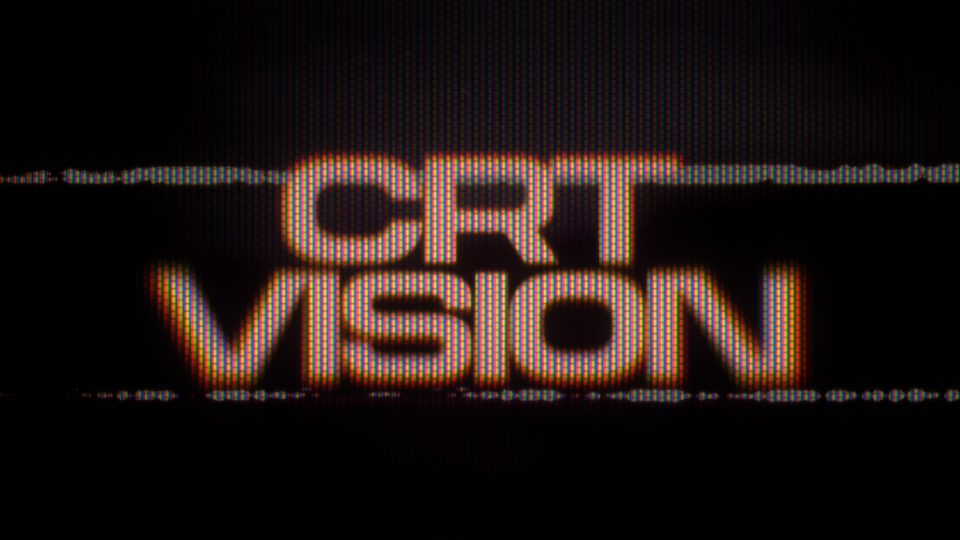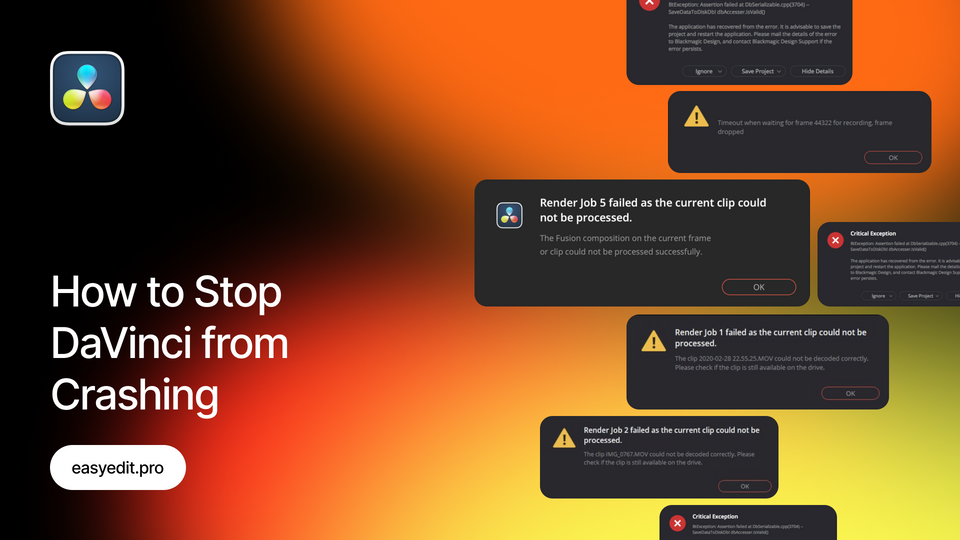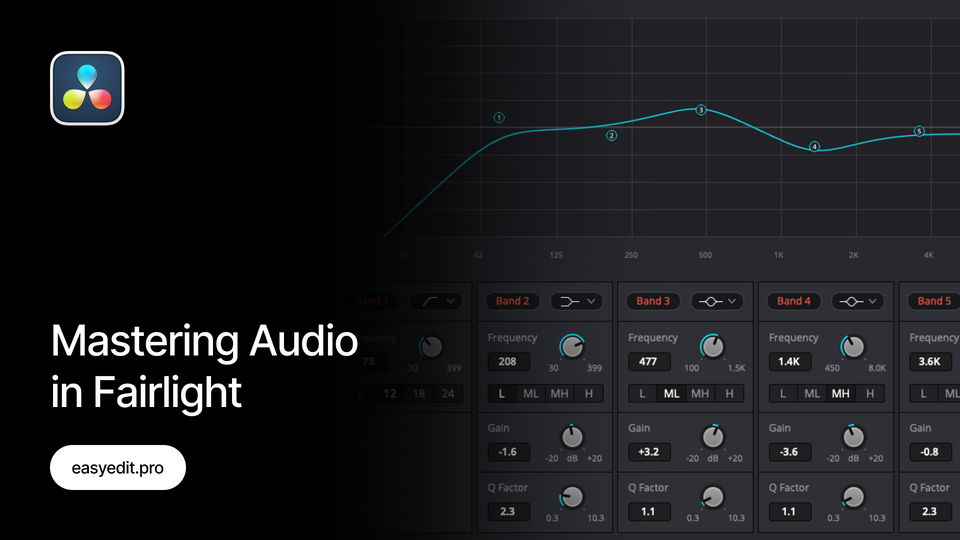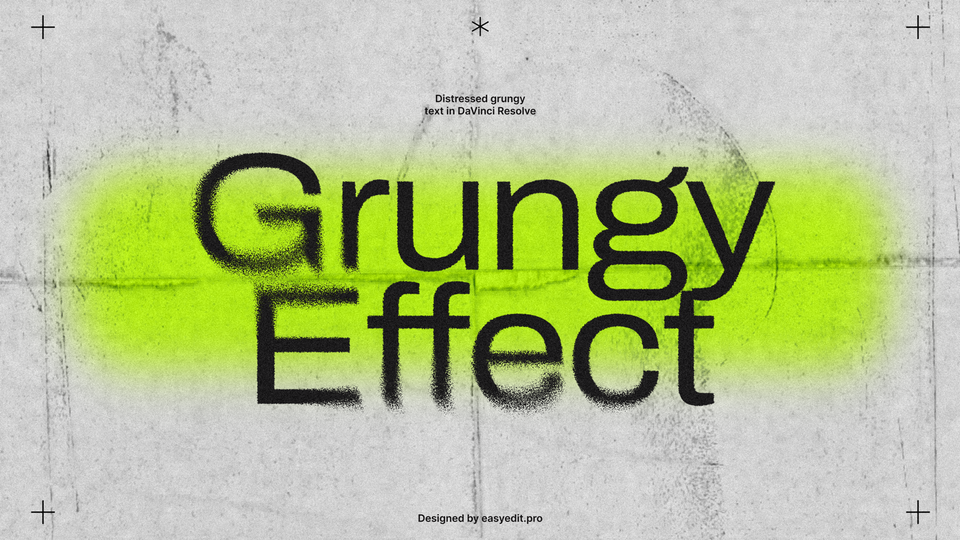
Created: 2 years ago
Best DaVinci Resolve Features and Effects
DaVinci Resolve offers a strong editing suite to cover all requests. You can edit, trim, add transitions, audio and video effects and much more. With regular and competitive updates provided, you can be sure that you choose the right software for your work.
So, what are the best features of DaVinci Resolve?
Magic Mask
The Magic Mask tool within DaVinci Resolve is an advanced rotoscoping/masking tool.It can track and create masks around objects and people, do color grading or composing in area within a mask.
To apply a Magic Mask, go to the Color Grading menu and click on this icon:
The tool is separated into 2 specific modes - first for objects and second for people, including specific body parts, or parts of clothing:
To apply the mask, select the part of footage and click on Toggle Mask Overlay. Next, click on Tracking and wait till DaVinci will analyze and track the Magic Mask. After this, you can apply any changes to the selected object.
The same way, you can apply the changes to the person or particular body part, clothing. To do that, select the suitable masking mode and choose the option you need from the list:
Magic Mask is a great tool that can help you quickly remove the background - click Add an Alpha Output in the Nodes menu:
And connect the Node lines:
If you placed another footage underneath the original one, DaVinci Resolve will automatically reveal it, keeping only the area selected in the Mask.
Depth Map
Depth Map is a quick and useful effect you can apply to your footage in DaVinci Resolve. In color grading, it is often the case when the front part of the footage requires color enhancements and changes that do not need to be applied to the background, and vice versa. This effect allows even quicker results than magic mask or rotoscoping objects by hand.
To apply the effect, go to the Edit/Color Page>Effects, select Depth Map and drop the effect as a new Node. DaVinci Resolve will analyze the footage using Neural Engine and show you the depth map in the preview window, which you can turn on/off, to see the result.
Here we can apply changes to our footage, by adjusting map levels:
After that, you can additionally color grade the front part of your footage and changes won’t affect the background.
Speed Warp
Is a great tool to create a slow-motion effect. This tool can analyze and interpolate the frames while still keeping a high-quality final look.
To apply the effect, go to the Edit Page>Inspector>Video>Speed Change and apply the suitable speed level. After this, go below to the Retime and Scaling menu, select Retime Process>Optical Flow so DaVinci Resolve will smoothly blend the frames together.
Next, go to the Motion Estimation menu below and select Speed Warp.
This tool is quick to use and will blend the frames to make the motion smoother.
Smart Reframe
Smart Reframe is another useful feature that can reframe the footage into different aspect ratios, so you won’t need to reposition and track the footage manually.
Go to the Edit Page to apply the tool. If your current footage doesn’t fit into the new screen size, fill the frame by zooming it in:
Next, go to the menu below - Smart Reframe. Click to Reframe, so DaVinci Resolve can analyze, reframe and track the footage.
If you need to track the video to another area, click on Object of Interest and choose Reference Point instead of Automatic.
Alignment Guides
To set your footage correctly within a frame, you can use another useful tool-the Grid. It’s similar to the Adobe Alignment Guides, and will help you to quickly fit several clips into one frame.
To apply the effect, go to Effects>Grid and drag the effect on your footage:
When you finish the adjustments, you can just turn the Grid off, or delete the effect from the timeline.
Voice Isolation
Useful DaVinci Resolve tool for working with audio, which can improve the quality of the sound recorded in the video. With the help of this tool, you can isolate the voice and remove any sounds from the background.
To apply the changes, select the clip, go to the Inspector>Audio and click on Voice Isolation check mark. Here you can customize the level of required isolation:
You can customize the isolation further, by changing the tones, speed or applying the changes via an equalizer.
Face Refinement
This tool can use face recognition and tracking to identify human faces in the footage.
To apply this effect, go to the Edit/Color Page>Effects and select Face Refinement and click to the Analyze button. After this, you can apply a vast amount of changes, including contrast and color of skin, retouching of any area, midtones, etc.
Face Refinement is a great tool similar to the mask, but allowing to apply specific changes. If you need to apply the effect on several people within the footage, you can just create a new Node and drag the Face Refinement effect on it, repeat the process:
Face Detection
Another useful feature that will sort all of your footage depending on the people, appearing on it. It can be extra helpful when you create a project for your clients.
To apply the effect, select the footage clips in Media Pool, right-click on one of them and choose Analyze Clips for People.
Next, go to DaVinci Resolve>Preferences>User>Editing and put a checkmark on Automatic smart bins for people metadata, save the preferences.
Now, DaVinci Resolve will collect all data related to the people in your footage in Smart Bins.
We’ve covered other useful tools for DaVinci Resolve, such as Power Bins, Adjustment Layer for Color Grading, Optimized Media and more in this guide.
Surface Tracker
Quick tip to track anything to moving object or surface, which is widely used by editors. To add the tracker, go to the Fusion Tab and select Surface Tracker among the tools:
Add the tool to the Fusion Tab and make sure you have selected Bounds in the Inspector>Controls menu:
Here, you need to draw the outlines to select the area, where you want the object to be tracked:
Go to the Tracking Behavior, to apply the required changes like Quality, Motion Range or Tracking Keyframes.
Finally, add the object you want to track as a new Node and link it to the Surface Tracker Node:
To Sum Up
Hope this article was useful and you‘ve discovered new features to use in DaVinci Resolve!
The software updates every year, bringing us high-quality features and updates. All of them would be a great addition to your daily editing routine, saving any editor from manual and repetitive tasks.
To learn more about DaVinci Resolve, check our blog - we create tutorials on How to export from DaVinci Resolve, DaVinci guides for beginners, how to change the framerate, apply LUTs, optimize DaVinci Resolve and many more.
Unlock unlimited templates for DaVinci Resolve - join EasyEdit Stock to get the highest quality LUTs, transitions, text effects, and more, with assets updated daily!
10k elements for Reels and Stories
Looking to add a splash of creativity to your Instagram stories and reels? You're just a click away! Discover our iOS app infi: packed with 10,000+ unique stickers and design elements to breathe life into your social media content.







